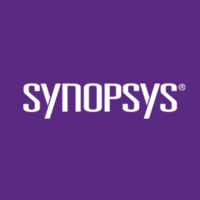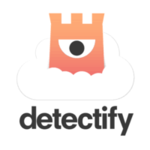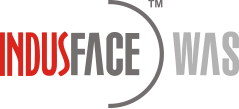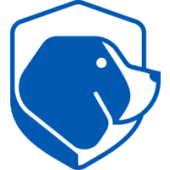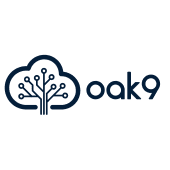What Is Dynamic Application Security Testing Software?
In the field of cybersecurity, dynamic application security testing (DAST) software is essential since it is a formidable instrument for locating and fixing possible flaws in web applications. This kind of security testing mimics actual attacks to evaluate an application's security posture, giving developers and security teams important information about vulnerabilities that bad actors might exploit.
In order to look for known security flaws, this software uses automated scans to explore a web application and analyze it from the outside in. Additionally, it uses manual testing methods to find special vulnerabilities that automated scans are unable to find. It is a crucial line of protection for companies, shielding them from online attacks that can jeopardize their private information.
DAST software attempts to take advantage of known flaws by submitting carefully constructed requests to the application. After determining whether the vulnerability exists by analyzing the application's response, it notifies the user. Either independently or as a component of the software development lifecycle (SDLC), this procedure can be carried out.
The ability of DAST software to detect vulnerabilities in real-time and give developers and security teams prompt feedback is one of its key benefits. By enabling early threat identification and mitigation, this capability helps firms save time and money when handling significant breaches. It is crucial to use DAST software that has a thorough database of known vulnerabilities and the flexibility to expand and modify tests to meet specific security requirements.
Seek out software that offers dashboards and reports that are easy to use, as well as integration with other security solutions utilized by the company. Additionally, make sure the program is updated frequently to stay abreast of emerging vulnerabilities and threats.
What Are The Recent Trends In Dynamic Application Security Testing Software?
Security risks are growing more complex and pervasive as technology develops and more companies depend on web and mobile applications. Organizations are using Dynamic Application Security Testing (DAST) technologies to guard against these risks. However, what are the latest developments in DAST software, and how can your company profit from them?
1. A Greater Degree Of Automation: The trend toward greater automation is one of the main developments in DAST software. Manual security testing can be very time-consuming and prone to human error as web applications become more complex. These days, DAST systems include sophisticated automated features that enable them to scan and test for vulnerabilities considerably more quickly and effectively.
2. DevOps Integration: Another significant trend in the sector is the use of DAST technologies into DevOps procedures. Security testing can no longer be neglected in the age of continuous delivery and agile development. Continuous security testing is now possible throughout the software development lifecycle because to the integration of DAST software into the development and testing process.
3. Machine Learning And Artificial Intelligence: Additionally, DAST software is using AI and machine learning. Even the smallest security flaws can be found with the aid of these cutting-edge technologies, which can analyze enormous volumes of data and spot trends and abnormalities. This improves the precision and efficacy of DAST testing while also saving time and money.
4. Transition To API Security: Due to the growing use of APIs in contemporary online applications, enterprises now place a high premium on API security. API testing features are now included in DAST tools, enabling thorough security testing of both front-end and back-end applications.
5. Support For Mobile Applications: DAST software is now providing support for testing mobile applications due to their widespread use. Both native and hybrid mobile apps are included, giving businesses the ability to secure every aspect of their online presence.
Benefits Of Using Dynamic Application Security Testing Software
Software called Dynamic Application Security Testing (DAST) is an essential tool for contemporary businesses looking to safeguard their digital assets and defend against online attacks. This kind of software assists in locating weaknesses in online applications and offers fixes to make sure they are secure against possible intrusions. The following are some of the main advantages of utilizing software for dynamic application security testing:
1. Comprehensive Evaluation Of Web Apps: DAST software makes it possible to evaluate web apps in a thorough and comprehensive manner. It offers a thorough examination of the application's weaknesses and possible attack routes while simulating actual attack situations. This kind of testing is a trustworthy method for finding vulnerabilities since it examines every facet of the application, including the client-side and server-side code as well as the application logic.
2. Real-Time Vulnerability Detection: An important benefit of DAST software is its ability to discover vulnerabilities in real time. This implies that it checks and scans the application continually, sending out alerts and notifications right away if any new vulnerabilities are discovered. This feature aids businesses in anticipating possible threats and taking preventative action to safeguard their apps.
3. Cost-Effective Solution: DAST software is an affordable way to find and fix application security problems. Organizations can prevent expensive and destructive data breaches and cyberattacks by doing routine testing and ongoing monitoring. Additionally, it saves time and money that could be used for remediation and manual testing.
4. Integration With Development Process: It is simpler to find and address security flaws prior to deployment when DAST software is able to smoothly interact with the development process. This lessens the likelihood of expensive patches and development delays and helps guarantee that security is incorporated into the application from the start.
5. Customizable Security Scans: DAST software provides security scans that are adaptable to an organization's unique requirements. This makes it possible to test various applications and technologies, leading to a more precise evaluation of potential risks and weaknesses.
6. Compliance And Regulatory Requirements: By detecting and addressing any vulnerabilities, DAST software assists firms in adhering to a variety of industry rules and security standards. For businesses that handle sensitive data and have to adhere to specific compliance standards, this is especially crucial.
7. Better Overall Security: DAST software helps to strengthen an organization's overall security posture by regularly identifying and addressing vulnerabilities. It lowers the likelihood of successful cyberattacks and data breaches and gives comfort in knowing that such threats are being handled and mitigated.
Important Factors To Consider While Purchasing Dynamic Application Security Testing Software?
A number of variables need to be taken into account while selecting the best Dynamic Application Security Testing (DAST) software for your company. In order to protect sensitive data and uphold your organization's overall security posture, this kind of software is essential for locating and fixing any possible security flaws in your web apps. Consequently, choosing a DAST solution requires careful consideration. When investing in dynamic application security testing software, the following important considerations should be made:
1. Coverage: The DAST software's coverage should be taken into account first and foremost. All kinds of web applications, including those developed using the newest frameworks and technologies, should be fully covered. In order to detect vulnerabilities throughout the application stack, it should also provide a broad range of testing capabilities and support various programming languages.
2. Automation: To support Continuous Integration and Continuous Delivery (CI/CD) processes, DAST software should have strong automation features. This guarantees the smooth integration of security testing into the development process, resulting in time and resource savings as well as quicker feedback on possible security threats.
3. Scan Speed And Accuracy: In a fast-paced, agile development environment, the DAST tool's speed and accuracy are essential. Without sacrificing test quality, the program should be able to swiftly scan large and complicated applications and provide correct findings.
4. Integration And Reporting: A quality DAST system should include thorough and understandable information on vulnerabilities discovered, their degrees of severity, and suggested corrective actions. In order to facilitate the monitoring and tracking of security issues, it should also provide integration with widely used bug-tracking and project management systems.
5. Scalability: DAST software should be able to adapt to your evolving needs as your company and application portfolio expand. It should have the capacity to manage numerous apps at once without sacrificing scan quality.
6. Support And Training: The degree of technical assistance and training provided by the DAST vendor is an additional important consideration. To help your staff get the most of the technology, the software should include documentation, training materials, and dependable customer support.
7. Cost: There are multiple payment models for DAST software, including per-user, per-application, and per-group. The software's cost must be taken into account, but it's just as crucial to assess the benefits it can offer your company in terms of security, productivity, and return on investment. When selecting the best Dynamic Application Security Testing software for your company, you can make an informed choice by taking these considerations into account. Before choosing a solution, it is crucial to do extensive research and test a variety of solutions to be sure you are investing in a tool that will fit your unique needs and give your apps the security they need.
What Are The Key Features To Look For In Dynamic Application Security Testing Software?
Software for dynamic application security testing, or DAST, is a vital tool for businesses trying to defend their online apps against any security risks. Businesses must now invest in strong DAST solutions to guarantee the security and integrity of their online applications due to the growing sophistication and frequency of cyberattacks. However, picking the best DAST software might be difficult with so many options on the market. Here are the essential characteristics of Dynamic Application Security Testing software to help you make an informed choice.
1. Comprehensive Scanning Capabilities: A DAST tool's capacity to conduct exhaustive and in-depth scans of your web applications should be its top priority. It should be able to crawl every page, including those that are protected by authentication, and cover every possible attack vector, including SQL injection, cross-site scripting, and server-side request forgery.
2. Accurate And Detailed Reporting: A trustworthy DAST tool should offer thorough and accurate reports on vulnerabilities found, together with information on their effect, severity, and remedy suggestions. Additionally, these reports ought to be simple to comprehend and adaptable to your organization's unique requirements.
3. Integration With CI/CD Tools: DAST software must easily integrate with your Continuous Integration/Continuous Deployment (CI/CD) pipeline in the fast-paced software development environment of today. Because of this integration, security testing can be done more quickly and effectively, guaranteeing that vulnerabilities are found early in the development cycle.
4. Automation And Scanning Frequency: Seek a DAST solution with automation features that enable planned and frequent scans of your web apps. It is essential to have a solution that can continuously monitor and test for new vulnerabilities because the threat landscape is constantly changing.
5. Accuracy And False Positive Reduction: The high rate of false positives, which can result in an excessive number of vulnerabilities being mistakenly identified, is one of the biggest problems with DAST testing. As a result, the software you use should have efficient techniques to lower false positives, like sophisticated algorithms and the capacity to omit established safe zones.
6. User-Friendly Interface And Ease Of Use: A decent DAST program should be easy to use and require little technical knowledge to utilize. Additionally, it should have user-friendly navigation that makes configuring, running, and analyzing scans simple.
7. Scalability And Flexibility: The quantity and complexity of your web applications increase together with the size of your company. Selecting a DAST tool that can grow and change to meet your changing requirements whether those needs include higher scan frequencies or the capacity to test a broad range of web apps, frameworks, and technologies is therefore essential.
8. Support And Maintenance: DAST tools need to be maintained and supported, just like any other program. To guarantee the tool's continued efficacy, pick a vendor who provides dependable technical support, frequent upgrades, and prompt problem patches.
Why Do Businesses Need Dynamic Application Security Testing Software?
Applications' security is crucial in today's digital environment for companies of all kinds. The average cost of a data breach for US organizations is an astounding $8.64 million, according to a Ponemon Institute analysis. This covers immediate monetary losses, clientele loss, and harm to the business's image. Businesses need to use Dynamic Application Security Testing (DAST) tools to make sure their apps are secure.
By mimicking actual cyberattacks, this kind of software assists in locating and repairing application weaknesses. The capacity of DAST software to externally scan applications, much like a hacker would, is one of its primary benefits. It provides a thorough evaluation of potential security threats by searching for flaws in the code, configuration, and dependencies of the program.
Furthermore, DAST software gives companies the ability to spot security flaws instantly, allowing them to address them before bad actors take advantage of them. Businesses can avoid possible data breaches and financial losses by using this proactive strategy. Additionally, DAST software assists companies in adhering to industry standards and laws like GDPR, HIPAA, and PCI DSS, which call for frequent security audits of apps.
Additionally, companies are constantly adding new features and upgrades to their applications as a result of the growth of agile and DevOps approaches. By making sure that these updates don't create any new security flaws, DAST software acts as a safety net. Businesses can save money over time by investing in DAST software, in addition to the evident security advantages. Resolving a security vulnerability during the development stage is far less expensive than handling the fallout from a data breach.
How Much Time Is Required To Implement Dynamic Application Security Testing Software?
The complexity of the application, the amount of features and integrations needed, and the extent of testing can all affect how long it takes to deploy Dynamic Application Security Testing (DAST) software. The process of implementation usually takes a few days to a few weeks. Before choosing a DAST solution, it is crucial for buyers to thoroughly evaluate the needs and objectives of their organizations.
This will assist you in figuring out how much integration and modification is needed, which will affect how long it takes to implement. Setting up the program, adjusting settings, and integrating it with your current systems are just a few of the processes that often make up the implementation process. After the first setup, which could take several hours, you will need to set up time for extensive software testing and optimization.
Certain DAST solutions can drastically cut down on implementation time thanks to their intuitive features and user-friendly interfaces. However, it's crucial to set aside extra time for team training and implementation when using more sophisticated and adaptable DAST software. To guarantee a seamless and effective implementation process, it is also essential to have a committed team and a clearly defined plan in place.
This can assist in preventing any implementation-related delays or problems. Overall, even though DAST software implementation times can differ, it is crucial to devote the required time and resources to guarantee that the software is correctly configured and integrated, which will ultimately result in a more reliable and secure application.
What Is The Level Of Customization Available In Dynamic Application Security Testing Software?
The degree of customization offered by Dynamic Application Security Testing (DAST) software is a crucial consideration. Although DAST technologies are made to find and address security flaws in web applications, each business may have different demands. Here, personalization is essential to guaranteeing the DAST solution's efficacy and efficiency.
A DAST software's degree of customization may vary depending on the manufacturer and the tool's particular capabilities. To meet the various needs of its customers, the majority of trustworthy DAST programs offer a great degree of customization. The capacity to design unique testing policies is one facet of customization. These policies are collections of regulations that specify the extent and level of difficulty of the security testing.
Users can adjust the DAST tool to target certain web application components or vulnerabilities that are pertinent to their environment by using configurable policies. Configuring the tool's scan parameters is a crucial component of customisation. This covers choices like selecting the kinds of attacks to be simulated, establishing authentication procedures, and adjusting the crawl depth.
Users can customize the DAST tool to meet their specific web application and security needs by having control over these options. A effective DAST program should also provide flexibility with regard to remediation and reporting. This implies that users have control over the reports' structure, level of content, and interaction with their current ticketing and issue tracking systems.
Additionally, certain DAST technologies include the ability to tailor the remedial recommendations to the unique workflows and procedures of the business. Finally, the degree of customisation that DAST tools offer also extends to their services and support. To help consumers optimize and customize their DAST system to meet their needs, the majority of providers provide training and consulting services.
Which Industries Can Benefit The Most From Dynamic Application Security Testing Software?
Because modern businesses rely so largely on online applications for their everyday operations, Dynamic Application Security Testing (DAST) software has become a vital tool for firms in a variety of industries. Cyberattacks, which can cause serious financial and reputational harm, are a persistent threat to these applications. By finding and repairing flaws in their online applications, DAST software assists companies in reducing this risk. DAST software can be very helpful for sectors like government, healthcare, and finance that handle sensitive data and must adhere to regulatory compliance requirements.
Cybercriminals frequently target these sectors, and any data breach might have dire repercussions. DAST software lowers the risk of expensive fines and legal action by continuously monitoring and testing web applications to make sure they adhere to industry standards and compliance laws. Furthermore, DAST software has a lot to offer companies in the e-commerce sector.
E-commerce websites are now frequently the subject of hacking attempts due to the growing popularity of online purchasing. DAST software guarantees the security of sensitive consumer data, including credit card numbers, and assists in locating weaknesses in these websites. In addition to shielding the company from monetary losses, this fosters consumer trust, which enhances brand recognition and fosters client loyalty. The technology sector is another one that stands to gain a great deal from the use of DAST software.
The risk of cyber threats rises in tandem with the ongoing evolution of technology and the growing usage of web applications. Businesses can ultimately save time and money by using DAST tools to find software and application vulnerabilities before they are released. Additionally, DAST software offers ongoing testing and monitoring to make sure that any modifications or updates to the application don't create new security flaws.
DAST software might also be advantageous for sectors like media and education that mostly depend on web apps to provide their services. Media companies frequently have websites with a lot of traffic, and educational institutions hold a lot of sensitive data, which makes them appealing targets for cyberattacks. These sectors may concentrate on their main offerings without having to worry about possible cyberthreats by using DAST software to secure their web apps and safeguard sensitive data.
Conclusion
It is evident from a careful investigation and evaluation of the best Dynamic Application Security Testing (DAST) software choices that this is a necessary tool for any company looking to safeguard its apps against any security risks. Businesses may proactively resolve these problems before malevolent actors take advantage of them thanks to DAST software's sophisticated scanning and testing capabilities, which continuously monitor and uncover vulnerabilities in web applications.
The degree of automation provided by DAST software is a crucial consideration when making a purchase. The program will detect and fix vulnerabilities more quickly and effectively if the scanning and testing procedures are more automated. Furthermore, the software ought to be compatible with your current security and application development technologies, facilitating smooth cooperation and integration.
The DAST software's analytics and reporting capabilities are yet another crucial factor to take into account. In addition to offering comprehensive insights into vulnerabilities that have been found, a strong reporting system also gives metrics and data to assist in prioritizing and fixing these problems. Communicating the software's efficacy to stakeholders and decision-makers can also benefit from this data.
Selecting a DAST program that provides extensive resources and assistance, including training, documentation, and customer support, is also crucial. Having access to an informed and helpful support staff is essential to staying ahead of possible risks because cyber threats are always changing. All things considered, the correct DAST software can offer your apps a priceless layer of security and ultimately spare your company time, money, and reputational harm.
You may choose the best DAST software for your company's needs with confidence if you carefully weigh the previously listed elements and pick a reliable and established vendor. Reacting to a security breach is never as advantageous as investing in preventive security measures.







